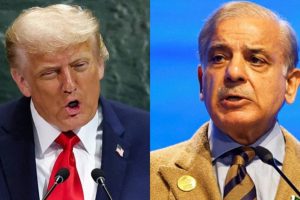At the Carnegie India Global Technology Summit, leading geopolitical analyst Ashley J. Tellis remarked that India has correctly assessed former U.S. President Donald Trump’s tariff objectives and is taking steps to address those concerns, particularly by proposing drastic tariff reductions in hopes of securing reciprocal benefits.
Tellis, a senior fellow at the Carnegie Endowment for International Peace, explained during a session titled “Tariffied World: T minus” that Trump’s trade actions stem from long-held grievances with the global trading system, rather than a structured grand strategy. He noted that the primary U.S. objective with India is increased market access.
“India has understood this and is now attempting to offer a package that drastically reduces tariffs on a number of items, in the hope that the U.S. will reciprocate—ideally within Trump’s declared 90-day pause on broader tariff action,” said Tellis. However, he cautioned that any delay in reciprocation could create political challenges for the Indian government.
On the broader U.S. trade policy, Tellis emphasized that there are too many conflicting impulses to label it a coherent strategy. “Trump’s approach is shaped more by long-standing impulses than by a systematic plan,” he said.
Adding to the discussion, Sinolytics CEO and China expert Bjorn Conrad said that China has been meticulously preparing for this kind of trade confrontation for years. Highlighting Beijing’s strategic readiness, he said, “China has two active cards and a wildcard—and they’ve written their playbook step by step.”
The first active card, Conrad explained, is Beijing’s ability to make it increasingly difficult for U.S. firms to operate in China through regulatory scrutiny and sanctions lists. “Watch companies like Apple, Starbucks, and Tesla,” he warned.
The second, more potent card involves export controls on critical raw materials, particularly heavy rare earth elements. “This could significantly impact industries from electronics to defense. The magnitude of this leverage is underappreciated,” he said.
China’s wildcard, he added, is its significant holding of U.S. Treasury bonds—currently at $760 billion. Though not yet in play, it remains a visible pressure point.
Speaking from an economic perspective, Shruti Rajagopalan of the Mercatus Center noted that shifts in global trade and supply chains are far more complex and slower than political decisions suggest. She highlighted the granular classification of goods—over 17,000 line items under global harmonized trade codes—and explained that building new supply chains takes time.
“Our family hasn’t changed spice vendors in Khari Baoli for generations. Similarly, global companies can’t just move iPhone manufacturing overnight,” she said, underscoring the inertia in deeply established trade systems.
The panel concluded that while political leaders can make swift tariff decisions, the broader global trade system—shaped by businesses, logistics, and regulatory frameworks—moves at a much slower pace.





